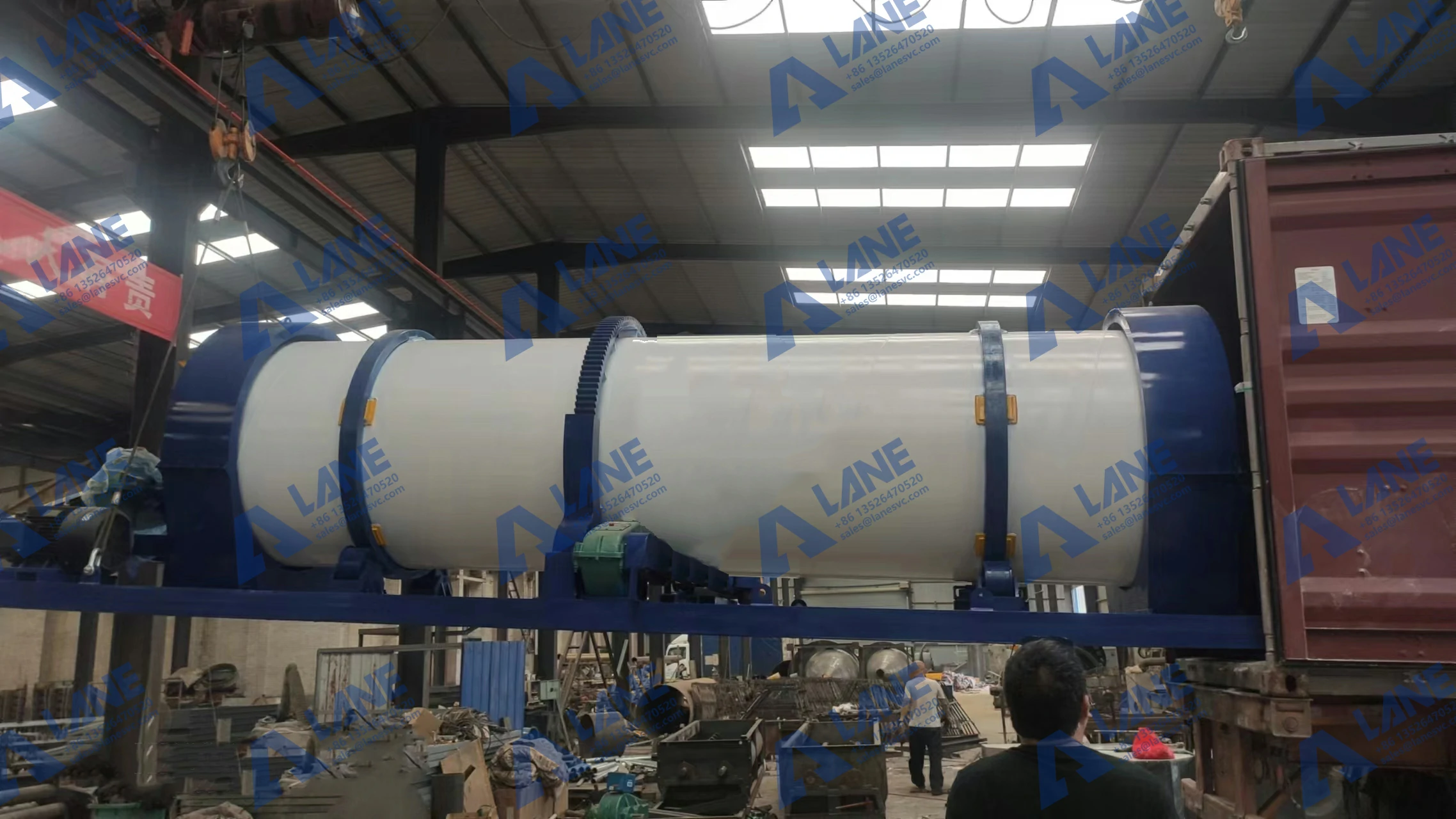The main components of 2-in-1 granulator are drum part, churning teeth part, motor and transmission system.
The raw materials are fully rolled to form granules in the drum section at the front of the two-in-one granulator, and then cut by the churning teeth in the back half to form harder and uniform granules. It is often used in production lines to make harder fertilizer granules.
Two-in-one granulator test video
Organic substance:
Animal manure: cow manure, chicken manure, pig manure, etc.
Plant straw: corn straw, rice straw, wheat straw and so on.
Municipal waste: treated organic waste.
Inorganic substances:
Phosphates: diammonium phosphate, calcium phosphate, etc.
Nitrogen sources: urea, ammonium nitrate, etc.
Potash: Potassium chloride, potassium sulfate, etc.
Additives:
Trace elements: Compounds of trace elements such as zinc, copper, manganese, etc.
Humic acid: Helps to improve soil structure and water retention.
Others:
Compound Fertilizer Raw Materials: Components of various fertilizer mixtures.
Waste: Decomposable waste such as wood chips and paper.

These ingredients can be used individually or mixed according to specific needs to meet the nutrient needs of plants at different stages of growth. When using raw materials, attention needs to be paid to their composition and proportions to ensure that the final granular fertilizer produced meets the growth needs of the crops. In addition, when manufacturing granular fertilizers, it is necessary to add the right amount of water so that the raw materials can better form particles.
| Model | Capacity(tph) | Power(kw) | Casing Thickness(mm) |
| LAZM-60/120 | 1-2 | 37+7.5 | 8 |
| LAZM-80/160 | 3-5 | 55+11 | 10 |
| LAZM-100/160 | 6-8 | 75+11 | 10 |
| LAZM-100/180 | 8-10 | 55+15 | 12 |
The working principle of a two-in-one granulator involves stirring, mixing, compressing and cutting the raw material to finally form granules.

The following is the working principle of a general two-in-one granulator:
1) Raw Material Preparation: Different types of raw materials, both organic and inorganic, are prepared and put into the feed system of the two-in-one granulator.
2) Mixing and blending: Once the raw material enters the machine, it passes through the inner part of the rotating drum, which serves to mix and evenly distribute the raw material. This ensures the homogeneity of the various raw material components during granule formation.
3) Wet pelletizing: For organic substances, wet pelletizing is usually the method used. In this case, the right amount of water is added to the raw material to make granulation easier.
4) Granule Formation: After passing through the drum section, the granule shaped raw material is sent to the second half, where the agitator teeth driven by the main shaft begin to rotate, and the movement of the agitator teeth causes the raw material to be subjected to shearing, extrusion and compaction within the drum. These actions result in the gradual formation of granules.
5) Granule discharge: The formed pellets are discharged through the machine’s outlet.
Overall, a two-in-one granulator converts raw materials into granular fertilizers or other granular products through the steps of agitation, wet granulation and particle formation. Each step in the working principle plays a key role in the quality and formation of the granules.

Two-in-one granulator combines the advantages of rotary drum granulator and churning tooth granulator, which makes it widely used in fertilizer production and other fields. The following are some of the advantages of the two-in-one granulator:
Efficient production: The combination of mixing and granulating functions improves production efficiency, and the integrated design reduces multiple handling and processing of raw materials.
Uniformity of granules: The mixing function of the equipment ensures that the raw materials are fully mixed, making the granules more uniform in quality, which is conducive to the uniform supply of plant nutrients.
Strong adaptability: The two-in-one granulator is suitable for a wide range of raw materials, including organic and inorganic substances, with strong adaptability to raw materials.
Simple operation: the operation and adjustment of the equipment is relatively simple, through the electrical control system can be easily realized, such as starting and stopping the equipment and speed control functions.
Controllable granules: The rotation speed can be adjusted according to the need to control the size of the granules to meet the needs of different plants for nutrients.
Integrated design: the equipment integrates the two functions of mixing and granulating, which reduces the footprint of the equipment and makes the production line more compact.
Two-in-one granulators are often used to produce uniform, hard-grained fertilizers.